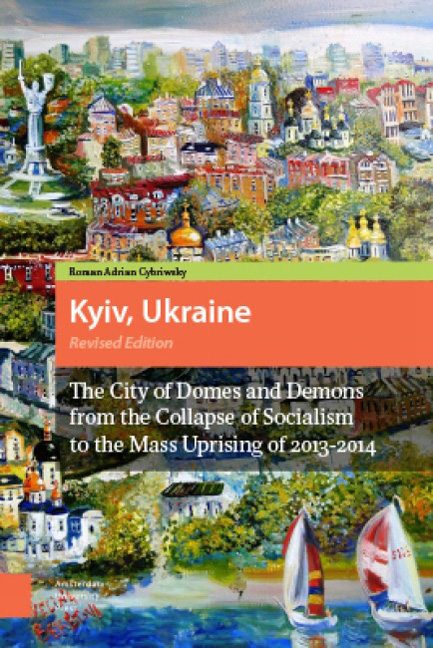 Kyiv, Ukraine
Kyiv, Ukraine Book contents
- Frontmatter
- Dedication
- Contents
- List of Illustrations and Tables
- A Note about Transliteration
- Preface and Acknowledgements
- 1 Far from Heaven
- 2 The Missing Museum of the History of the City of Kyiv
- 3 Sketches from the Capital
- 4 Soviet Ways, Post-Soviet Days
- 5 Historical Memory
- 6 The Center of Kyiv
- 7 A Geography of Privilege and Pretension
- 8 Landscapes of Struggle
- 9 “Suburbia”
- 10 Seamy Stories
- 11 The Defenders of Kyiv
- 12 Reflections
- Postscript
- References
- References
1 - Far from Heaven
Published online by Cambridge University Press: 10 December 2020
- Frontmatter
- Dedication
- Contents
- List of Illustrations and Tables
- A Note about Transliteration
- Preface and Acknowledgements
- 1 Far from Heaven
- 2 The Missing Museum of the History of the City of Kyiv
- 3 Sketches from the Capital
- 4 Soviet Ways, Post-Soviet Days
- 5 Historical Memory
- 6 The Center of Kyiv
- 7 A Geography of Privilege and Pretension
- 8 Landscapes of Struggle
- 9 “Suburbia”
- 10 Seamy Stories
- 11 The Defenders of Kyiv
- 12 Reflections
- Postscript
- References
- References
Summary
A Curious Face
When Kyiv is stripped of its roads, buildings, bridges, and other man-made features and is seen from up high in satellite view, it is said to resemble the face of God in profile. At least that is the central argument of a somewhat wacky but surprisingly interesting 2010 book entitled Kyiv: Sviaschennyi Prostir (Kyiv: Sacred Space) by two environmentalists/landscape architects: V.V. Kolin’ko and H.K. Kurovskyi. The photograph at the start of the book is quite striking in this regard: we see very clearly the face of a handsome man faithfully outlined by the combination of the right bank of the Dnipro River where Kyiv was founded, the contours of high bluffs that face the river, the other hills of the city, and its various deep ravines and stream valleys. When we add place-names to the photograph, we see that the district called Pechersk and its ancient monastery, Pecherska Lavra, form the forehead, Stare Misto (Old City) shapes the left eye and eyebrow, while the centuriesold church of St. Sophia, still the central-most historical landmark in Kyiv, is the iris. St. Michael's Church, also a prominent architectural landmark, is between the bridge of the nose and the forehead. We also see that the nose itself is the storied river-flat neighborhood of Podil, that the highlands of Sirets form the contours of the chin, and that the contours of the ear are shaped by the uplifted topography of Sovki and the network of small ponds that are located between Sovki's hills. It's bizarre, and anyone who knows Kyiv should be awed.
On the other hand, we have to remember that stripping a satellite photograph of man-made features means manipulating that photograph so that only selected natural features are shown. Who knows what other enhancements were made in the process? Some strategic selection of orientation with respect to cardinal directions and colors for the photo at the outset, a dash of extra shading here, a deeper ravine there, and an inconvenient highland or stream course subdued or removed from some other place, and we have a human face. With more manipulation, we could perhaps present the city as a kolach (traditional Ukrainian braided ring-shaped bread) or as the face of a healthy Ukrainian sunflower. Incredibly, there is no explanation about how the book's key photograph was created.
- Type
- Chapter
- Information
- Kyiv, UkraineThe City of Domes and Demons from the Collapse of Socialism to the Mass Uprising of 2013–2014, pp. 27 - 54Publisher: Amsterdam University PressPrint publication year: 2014
